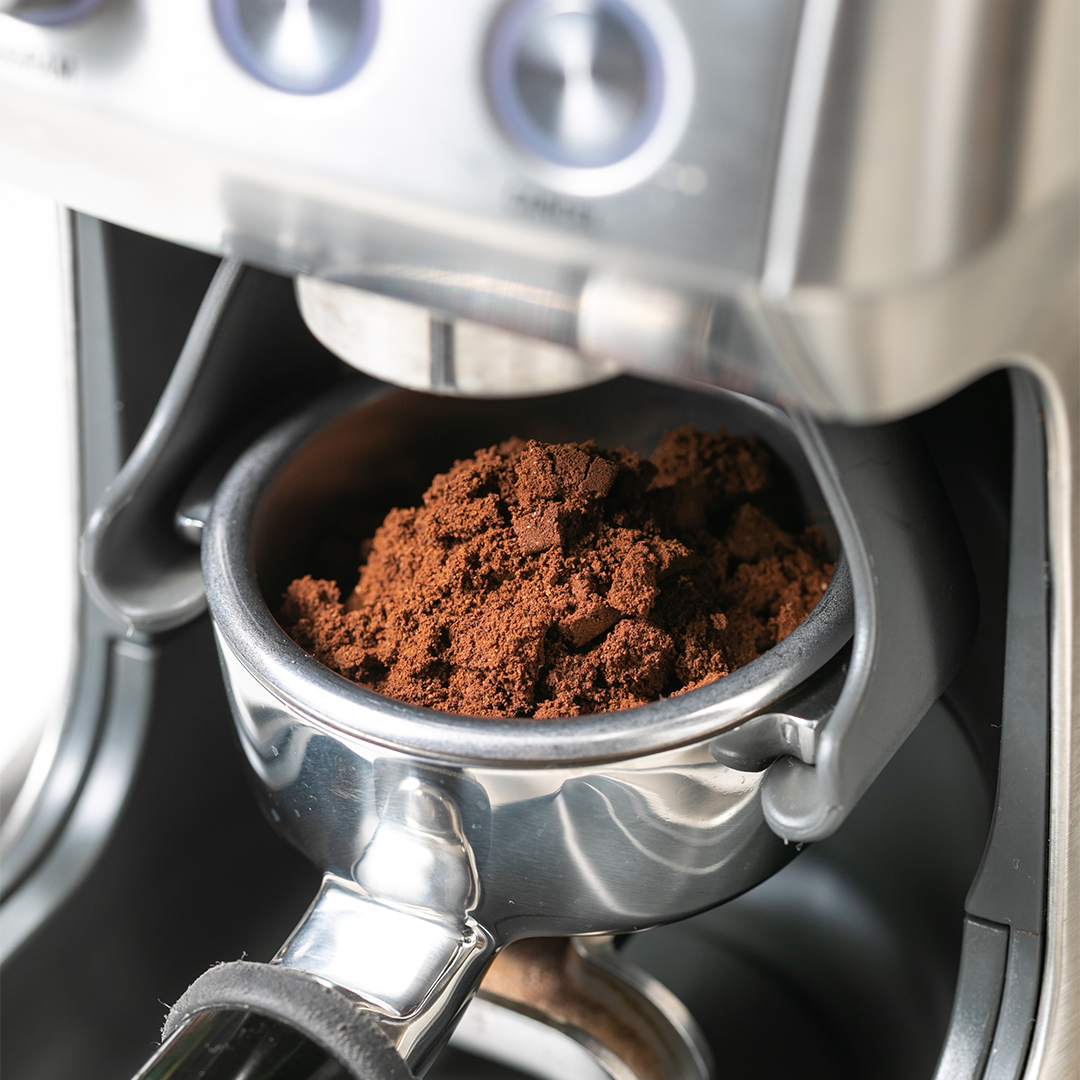Different methods require different grinds
Different brewing methods have different ideal grind sizes to ensure we get the best flavour and extraction from the brew, but what does grind size do to our brews? Well, grind size affects a lot of things. It affects factors such as strength, mouthfeel and more importantly taste. The finer we grind, the larger the surface area comes into contact with water, which affects extraction, brewing time and for espresso brewing the puck resistance.
Let’s go down the list of the more popular brewing methods and discuss which grind size is ideal for each.

Espresso
In exchange for the shorter contact time between the water and the coffee grounds compared to other brewing methods, espresso brewing makes use of pressure to increase extraction. The pumps in the espresso machine provide the pressure needed, but it’s the coffee puck that provides the resistance to create that pressure, which is why the coffee needs to be ground finely.
-v1734063260027.png)
Espresso can be a bit more finicky to dial-in the grind size compared to other brewing methods. The important thing here is to taste, taste, and taste! Whether the shot looks too runny and finishes too fast, or the opposite and it takes too long to reach the target liquid output weight, I think it’s a good practice to taste each shot.

When I try to dial-in the grind size of Pablo & Rusty’s Porter Street Coffee Blend (one of my favourites from our catalogue of Coffee Subscriptions), I have a starting default grind size for my grinder. I pull a shot, taste it and adjust the grind size accordingly. If it tastes too sour or under-extracted, I adjust the grind size finer. If it tastes too bitter or it becomes too astringent, I dial the grind size back a bit coarser. I do this until I reach my desired flavour. This is all regardless of the shot time. Even though my goal is to extract 42 to 46 grams of espresso using 21 grams of ground coffee in 25 to 35 seconds for a double shot. The most important outcome is how it tastes.

Pour Over
For pour over, the general grind size can range from medium-fine to coarse. Pour overs provide the coffee grounds more contact time with the water, so we can grind our coffee coarser than espresso brewing.
My personal favourite is the V60, but I also play with the Kalita Wave and the Aeropress from time to time. Everyone has their own recipes and ideal grind size. Just like espresso, taste is king here. What I usually do is to grind finer until I taste bitterness and astringency in my brew, then dial it back a notch.

French Press
On the other hand, the French Press usually warrants a coarser grind for thedue to an extended period of water contact time and to prevent the coffee from escaping through the mesh filter.
This is a general guideline and flavour rules regardless of the grind size, especially with this type of brewing. Through my home barista journey, I learned that there is no one correct answer as to what the best specific grind size is. It all depends on the coffee, your recipe and your ideal brew.
Grinders and settings

When you are stuck
If you find yourself in a grind calibration limbo, go to the extreme. Go really fine or coarse. Adjust finer if your brew tastes weak or sharply sour. On the other hand, if it’s too bitter or astringent, try a coarser grind setting. I also found it helpful to do a DIY solo cupping session with the beans on hand just to rule out the coffee beans as a factor especially if you do not know the roast date or quality of the beans. Of course, I’ve never found this to be an issue with Pablo & Rusty’s coffee beans as their bags are properly labelled with the roast date, nitrogen flushed for maximum freshness and our quality and taste are second to none.

I’m Christian, a finance analyst at P&R who dabbles in the art and science of coffee as a hobby. My journey kick-started when I joined the P&R team and became enlightened to Drink Better Coffee. It’s amazing how a little time, effort and know-how has transformed my relationship with coffee and for that, I’m forever grateful to P&R. I hope this little write-up of mine can help you in your coffee journey as well. This comes from the perspective of an informed coffee consumer rather than a coffee expert.
Like to learn more about adjusting your ginder for espresso? Check out our "How to adjust your coffee grind" video.



